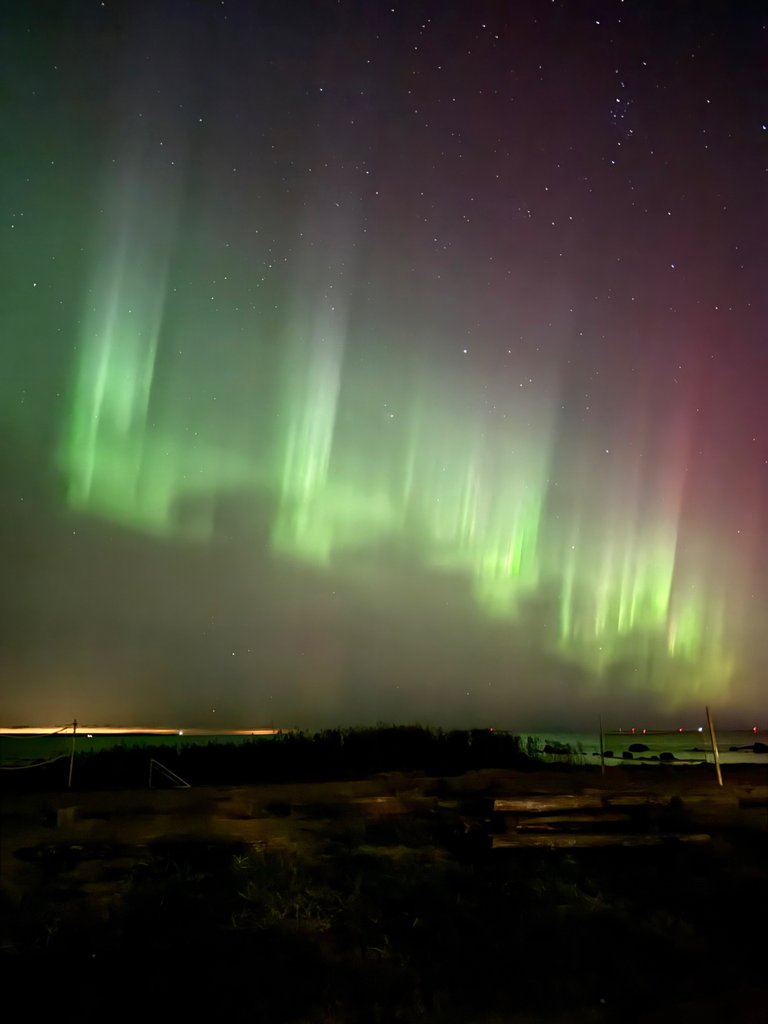I think you missed the strongest time when the sky really lit up. I was just beginning to leave my spot after 2 hours and then boom, half the sky lit up with strong auroras in seconds. The time was 22.35
As for the camera settings. For the best results I use no more than 3 or 4 seconds of exposure time, otherwise the patterns get blurred when lights move quickly. Aperture is usually around f8 so other details on the photo remain mostly in focus too. ISO setting depends on how strong the lights are, usually I use 4000-5000 ISO.
My camera can handle quite a bit of ISO really well, but some sure can be seen with 5000 setting. Adobe Lightoom’s AI noise removal work really well though and rids the photo of noise without losing detail. I don’t have my yesterday’s photos proccessed yet but here is one from my phone.

The light pollution you see at the horizon is Helsinki btw😄
Don't worry about going further north for getting epic shots. Im a bit more south than you and still getting epic stuff. It comes down to patience being hours in cold and hoping for the the blow up. I have alerts turned on on my phone when stronger bursts of sun waves hit the earth. We still have a couple of years of Solar maximum so we will see more of these events here on this latitude. Plenty of solar storms but clouds are the biggest enemy.
That is awesome! Where are you tracking to see if there will be any?
I didn't realise you could use such a fast ISO for it. I am going to have to up my game a lot :D Thanks for giving me some pointers, it is highly appreciated!
That is a pretty great shot with a phone too.
It depends on your camera too, how much it can handle higher ISO. My old one was quite bad at 5000(extremely noisy)and I had to use longer shutter speeds like 6 or 7sec, so I could use lower ISO like 2000.
To track northern lights activity I use Space Weather Live app, can also be watched on pc.
It usually sends an alert on my phone about the current KP index, which tells me generally how strong the storm is, like right now for example.
If there is good activity going on, I look for local cloud forecast, if I have clear sky or at least somewhat clear, then I’ll check out different metrics in the app if it’s worth driving to somewhere dark. Usually I check out these indexes. Hemispheric power near 100 is very promising but yesterday it was only 70 for example.
There is a couple of more I look at when deciding to drive out. Still, there is never a guarantee, I might sit for hours and see nothing besides a faint glow, or sometimes get very lucky. Northern lights can appear in seconds and be gone in seconds as well.
Tonight is quite promising too, but Estonian cloud forecast is pretty bad tonight so I won’t bother.
I am going to have to test my camera a bit, as I rarely use high ISO. It should be pretty decent, but let's see!
Thanks again for the info and suggestions. I will start digging around.
(The clouds are rolling in here too)